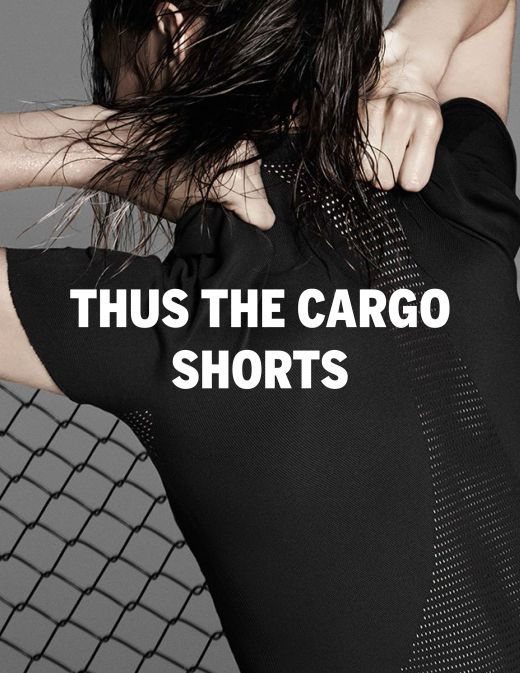K-HOLE
with Adam Abdalla

K-HOLE members in the studio
The group utilizes a coy etymology in their lauded trend reports, dynamic visual presentations that would impress even famed statistician and Sunday sculptor Edward Tufte. The reports exude an impeccable sense of self-branding that your typical CMO would assume only a demographical unicorn—i.e., a self-actualized millennial—could conceive.
This past February, the group developed and implemented the advertising campaign for the New Museum’s 2015 Triennial: Surround Audience, curated by Lauren Cornell and artist Ryan Trecartin. Concurrently, cofounder Emily Segal was named creative director of the $55 million venture-capital-backed music lyric annotation startup Genius (formerly Rap Genius), joining the ranks of former New Yorker music critic Sasha Frere-Jones and wunderkind political flack Audrey Gelman. In April, Segal collaborated with artist Simon Denny to use the opening of his PS1 exhibition as a launch party to debut Genius’s beta site. Full disclosure: Segal held her first post-college gig as my assistant at a prominent New York public relations firm at a time during which I was establishing their arts and culture division (and where I am currently still employed). She is not a client, but a former colleague whose path and interests have dovetailed with my own remarkably. Given this intersection, the Miami Rail asked me to catch up with two members of the group to discuss their work and the evolving taboos (or lack thereof) in today’s art world.
ADAM ABDALLA (MIAMI RAIL): The crux of the Venn diagram in which contemporary art overlaps with marketing, branding, and public relations has always been considered a murky place—with varying levels of murkiness, depending on who you ask. Organizationally, as both artists and “creative professionals,” how do you mitigate this?
GREG FONG: Very carefully. We jumped into K-HOLE with the underlying assumption that branding decisions are artistic decisions, and vice versa. It’s not so difficult for stuff to leave the art world. It’s been much harder for businesses/brands to enter the art world, because they’re not usually there for the criticism, theory, or discourse—they’re there to convey that they’re involved in culture. And a lot of people in the art world are too sensitive/avant-garde/ anticapitalist to really get down with that. To be blunt, we’re artists LARP-ing as “creative professionals.” What we do, generally, is informed by and cognizant of the complex discourse surrounding art and culture. We just try to convey our thoughts in a way that is really accessible, using examples that impact nearly everyone.
SEAN MONAHAN: I always think of the tagline from The Real World when we get asked questions about the fraught relationship between art and branding. The snowclone of that tagline that K-HOLE has been trying to explore might be: “Find out what happens when art stops being polite… and starts getting branded.” We wanted to find out what was going on in this space of overlap that was freaking everyone out so much.
RAIL: In your first report, K-HOLE #1, you explore in-depth the concept of Fragmoretation, a term you coined that, correct me if I’m wrong, refers to corporations marketing boutique, bespoke experiences, rather than resting on the laurels of singular name recognition, with the long-term goal of creating vertically integrated environments that are comprised of uniquely branded elements of the same ownership. Do you think this concept has relevance in the art world? Zach Feuer has invested in galleries in the Donut District as if they are MLB farm teams. Many dealers—Gagosian, Zwirner, Max Levai of Marlborough Chelsea—have opened or invested in restaurants where they consistently entertain. How far could you see this concept translating in the art world?
FONG: Obviously there’s an aspect of being VC-like with your money that lends your brand/business a bit of a baller status. And art dealers definitely want to be called “daddy.” But I don’t know if this is happening in other places, so maybe it’s also just a product of a new relationship to real estate in New York that has everyone playing Monopoly.
MONAHAN: I think the trend you’re describing is more akin to Flatmentation (the complementary trend to Fragmoretation). We used Flatmentation as a way of describing how huge multinational holding groups were hoovering up ever more brands under their umbrella (e.g., LVMH). I think the bespoke element of this is more a result of the art world’s desire to do things in an understated, discreet way. But the intention of those investments is always meant to reflect positively back on the gallery’s success and prestige.
RAIL: Speaking of success, one of the most widely discussed elements of this year’s New Museum Triennial existed outside the confines of the building itself. For this show, your contribution was essentially its mascot, a pill named XR, which was most prominently available as a digital sticker through the LINE app, in addition to print and digital advertising. What brought you to the concept for XR? Did the presentation to the curators and administrators feel like a pitch meeting or a studio visit?
FONG: Ryan and Lauren tapped us early on in the Triennial selection process to create an original commission. At first, our work with them was rooted principally in consulting. They’d bring us a bunch of themes they saw in the art world and we’d try to locate them in a broader cultural/political spectrum. Halfway through the process, Lauren asked us if we’d really like our contribution to be 100 percent immaterial, and we freaked out a little. It was a pretty easy decision for us to do the ad campaign, but we did have to sell it to different people at the museum like any other advertising/creative services agency would. We knew that one of the themes of the exhibition was language, and we had been obsessed with LINE stickers, which are essentially large, gestural emoji with better drawings. We had always thought it would be really cool to try to make a set of our own, and we worked with four or five different illustrators (and a huge list of ideas) to try to figure out the right visual vocabulary. Eventually we realized that it would be best to feature just one character, and XR seemed like the cutest, most relevant, and hilarious option.
MONAHAN: We settled on the pill character because we wanted to riff on everyone’s anxiety about big “generation-defining” events. Who’s in? Who’s out? Rather than make a character to represent who and what are in the exhibition, we wanted to make a character about everyone’s anxiety about whether or not they fit into the framework of the exhibition.
RAIL: Wieden+Kennedy recently devised a campaign for the Cooper Hewitt, Smithsonian Design Museum that intended to disassociate their image from the traditional museum, utilizing terminology such as “MY-KID-COULD-MAKE-THIS” in reference to contemporary art. Unless they were advertising for a World War II museum or something of that ilk, I can’t imagine who this is supposed to appeal to. What’s your take?
FONG: I don’t think they’re very funny.
MONAHAN: I’m amused.
RAIL: Clearly, a tremendous amount of research goes into your reports. That said, do you consider your work, to some extent, to be read as satire? If so, can you associate a percentage with how seriously we should be taking it?
FONG: We don’t consider our work to be satire at all, although it’s definitely meant to be funny. We simply try to articulate our ideas in the most relatable, engaging way possible.
MONAHAN: Zero percent of the K-HOLE reports are ironic.
RAIL: Did the popular engagement of the term “normcore,” which you coined in your report YOUTH MODE, affect your practice as a whole? How bastardized did its meaning become in translation?
FONG: It stressed us out.
MONAHAN: I think “bastardized” is the wrong word. Normcore as we defined it in October 2013 is not what normcore means in June 2015. But when you try to do things that impact culture on a macro level, you have to brace yourself for certain more complicated aspects of a concept to get lost in translation.
RAIL: What kind of opportunities have been presented to you on a corporate level based on your trend forecasts? Do they treat you as “artist as problem solver” or “cool kids—let’s milk their steeze?”
FONG: Corporations have been really interested in working with us, but it’s taken us about a year to figure out exactly what to do with them. Most companies simply want a #normcore, some way of going really viral. Others want a new perspective on what they’re doing, to vet against other proposed strategies, metrics, or whatever. And some just really want some articulate millennials in the room.
RAIL: PR, once basically dirty laundry in the art world, has become commonplace in the New York scene for galleries who can afford it. Do you think its necessary to get noticed? Has it helped you personally, as artists-cum-trend reporters?
FONG: The phenomenon of normcore wasn’t something we were in control of, or even wanted to happen. We’ve never really had any kind of management of our public relations, so it’s obviously not necessary to have PR to get noticed. On the other hand, while the exposure has helped us in some ways, the opening of so many doors has been a huge distraction. Who’d think that after a year, journalists would still be talking about normcore?
MONAHAN: I think PR has moved mainstream as social media has become an ever-larger component of how people interact with culture and each other. The threat of saying or doing the wrong thing online and becoming a meme victim is more real now than ever.
ADAM ABDALLA is a strategic marketing and communications consultant based in New York.











